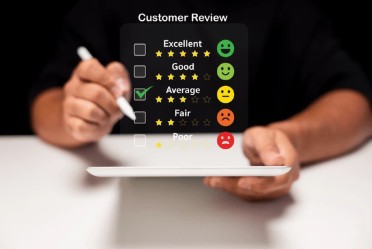
When mediocrity comforts but excellence elevates
Mediocrity is a reality we encounter more often than we admit.
It doesn’t necessarily mean failure or incompetence, but rather the absence of effort, ambition, and responsibility.
1. How mediocrity creeps in and how to spot it
In the workplace, mediocrity manifests itself subtly:
-
Minimum-effort processes: repetitive tasks performed without reflection or optimization.
-
The “good enough” culture: tolerance of superficial work or avoidable mistakes.
-
Employees on autopilot: doing just enough to stay under the radar.
-
Lack of initiative and stifled creativity: fear of suggesting solutions or taking risks.
For example, think of a customer service department that systematically replies, “Sorry, there’s nothing we can do.” This is not incompetence, but a refusal to seek solutions. As Jim Collins reminds us in Good to Great: “Good is the enemy of great.”
2. Excellence: a state of mind
Excellence is not perfection. It is the constant drive to improve, to learn, and to rise above complacency.
It is reflected in:
-
Clarity of standards: knowing exactly what is expected and refusing to settle for the minimum.
-
Personal commitment: daring to go beyond the prescribed tasks.
-
Organizational courage: saying no to complacency and challenging the status quo.
Toyota illustrates this well through the Kaizen method, where every employee is encouraged to continuously propose improvements.
As Aristotle said: “We are what we repeatedly do. Excellence, then, is not an act, but a habit.”
3. Tangible consequences
When mediocrity prevails, the impact can be devastating:
-
Loss of clients: they feel indifference and routine.
-
Demotivated talent: the best people eventually leave.
-
Stalled innovation: fear of risk-taking and lack of initiative.
When excellence takes root, the benefits are clear:
-
Strong customer loyalty and engagement.
-
Motivated and proud employees.
-
Enhanced innovation and organizational resilience.
4. Concrete actions for companies
-
Clearly define standards of excellence: quality, communication, service, and company culture.
-
Empower employees: training, autonomy, and adequate tools.
-
Value effort and initiative: recognize those who strive to improve and take calculated risks.
-
Establish regular follow-ups: feedback, coaching, and celebration of achievements.
-
Encourage proactivity and accountability: inspired by Stephen Covey’s The 7 Habits of Highly Effective People.
5. Concrete actions for employees
-
Step out of autopilot: seek meaning in every action.
-
Develop your skills: continuous learning, curiosity, and active growth.
-
Take ownership of your value: don’t wait for the company to motivate you; be the actor of your own impact.
-
Dare to propose and experiment: test new ideas and solutions.
Choosing excellence is an act of courage. It begins with refusing mediocrity, by being curious, demanding, and engaged. Companies that commit to this path attract top talent, retain clients, and innovate.
Individuals who embrace it become leaders of their own lives, not just “good employees.”
So, next time you are tempted to say “that will do”, ask yourself: Am I feeding mediocrity, or am I building excellence?
You can listen to the full episode of the radio column “Invitation to Audacity” on Choq FM right here on this topic :

